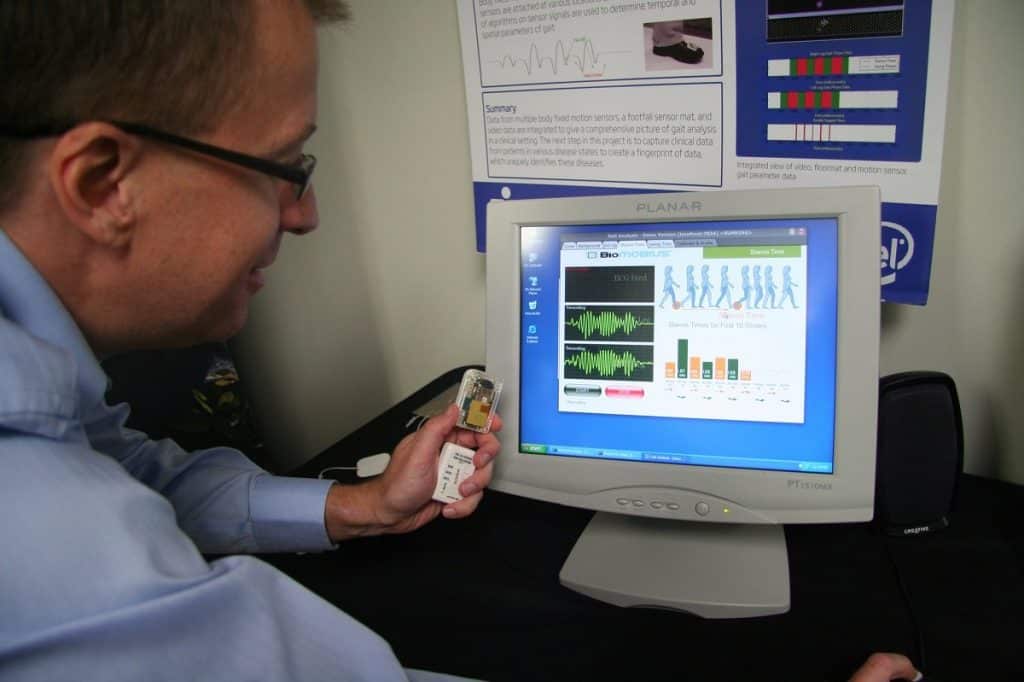Current and emerging technology has the potential to revolutionize the healthcare industry. While there are many incredibly exciting developments on the horizon, much of it is built on the framework of technology that is already in place and is starting to quietly—and not so quietly—change the way we interact with our health.
Communication and access to information is one of the biggest ways in which technology has already transformed the healthcare industry. Incremental change and the speed with which the internet, personal computing devices, and mobile technology has become embedded in our day-to-day lives cloaks just how powerful a shift has happened when it comes to our health. Information which once was only available by going through highly trained specialists or seeking out expensive medical libraries and combing through dense, inaccessible texts is now at your fingertips—much of it for free and provided in easy-to-access and to understand pieces.
More patients are empowered than ever before to quickly and easily search symptoms and suggested treatments—including at-home emergency response instructions and recommendations on when and how to seek professional intervention. The world-renowned Mayo Clinic is a go-to source of first-response research by many. The ability to share experiences and advice helps patients feel less alone and better informed as to the options available for their own situation from others who have suffered like them, and qualified professionals who have open-sourced their knowledge online.
And it’s not just anecdotal, layman-oriented medical knowledge that’s available, either. Medical research and studies are shared, reported on, and available remotely. Oncotarget, controversially, openly offers access to peer-reviewed online bio-medical journals and shares the latest research developments on social media to help people stay up to date. And, of course, technology is also helping scientists and medical professionals accelerate research, model outcomes faster and more accurately, and synthesize ever more advanced solutions like 3D printed prosthetics and organs, augmented reality and VR treatments, laser and robotic microsurgeries, and cyborg-like implants for everything from vision loss to hands-off medication microdosing.
From major diseases, injuries, and life-preserving efforts to the day-to-day improvement of people’s health and well being, technology is transforming the possible. Wearables are a well-established trend that is becoming more powerful as the engineering and programming catches up to and spurs onwards our dreams of what could be. While early generations of fitness trackers and smart-watches tracked steps taken and measured heartbeats, current and emerging technology is tackling big data collection and number crunching to provide insights into advanced wellness measures and is even stepping into the realm of diagnosing and treating conditions.
Under development are wearables and implants that could monitor your condition, inform your primary care provider of any concerns, and even issue a dose of a necessary treatment. There are already attachments for mobile phones that allow medical professionals like this Dentist in South Barrington —and perhaps, someday, everyone—to take detailed measurements in the field. Measurements that are currently only available with the use of large, cumbersome, and expensive medical equipment.
These small, accessible gadgets, along with wireless internet and mobile technology are helping provide medical care to almost every corner of the world, not just in large, developed cities. Some new and emerging medical technology developers are even open-sourcing their designs and encouraging practitioners on the ground to 3D print their own tools.
Not all parties are supportive of the trend toward empowering patients and reducing the gatekeepers, exclusivity, and expense of access to professional information and technology. Companies worry about the commercial impact of these developments, while others wring their hands over the danger to the public of too much access to information they’re not qualified to process and respond to. On the other side of the fence are those who believe that the public has a right to information and solutions that have a bearing on their health.
More traditional patterns of medical practice are also undergoing quiet shifts. Appointments are getting easier to book and medical information is easier to retain and access with integrated online systems. You can already book appointments with some medical services providers and access your own health and medical testing records online at your convenience. Increasingly, online consultations are being explored and implemented for patients in remote areas. Eventually, this could open up the possibility for more regular care and even some types of testing to be done from wherever and whenever works for you, using nothing more than your smartphone.
Technology has already transformed the healthcare sector in ways that we take for granted, and that trend is going to accelerate. The possibilities are enormously exciting, and show a positive trend toward empowerment, open-source, and patient-first approaches.

